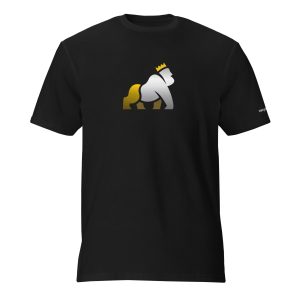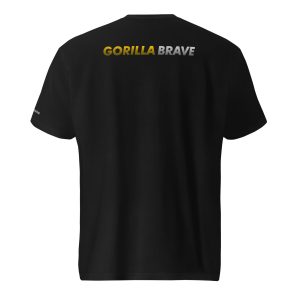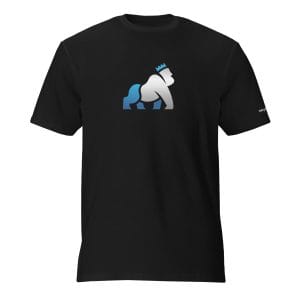Competition Risks: Thriving in a Dynamic and Competitive Market
The food and beverage industry is a battleground where countless businesses vie for consumer attention and market share. Competition is fierce, driven by innovation, changing consumer preferences, and the constant emergence of new players. Understanding the dynamics of competition and developing strategies to thrive in this challenging environment are crucial for businesses to succeed.
The Nature of Competition Risks: A Multifaceted Challenge
Competition risks in the food and beverage industry are diverse and ever-evolving:
- New Entrants: The industry is constantly attracting new players, from innovative startups to established companies expanding into new markets. These new entrants can disrupt existing market dynamics, introduce new products and services, and challenge the status quo.
- Price Wars: Aggressive pricing strategies by competitors can put pressure on profit margins and force businesses to lower their prices to remain competitive. This can lead to a race to the bottom, potentially impacting product quality and long-term sustainability.
- Product Differentiation: In a crowded market, it’s crucial to differentiate products and services to stand out from the competition. Businesses that fail to offer unique value propositions or compelling brand identities may struggle to attract and retain customers.
- Innovation: The food and beverage industry is driven by innovation, with companies constantly developing new products, flavors, and formats to meet evolving consumer demands. Businesses that fail to keep pace with innovation may lose market share to more agile and forward-thinking competitors.
- Marketing and Branding: Effective marketing and branding are essential for building brand awareness, attracting customers, and fostering loyalty. Businesses with limited marketing resources or ineffective marketing strategies may struggle to compete for consumer attention.
- Distribution Channels: Securing access to distribution channels, whether through retail partnerships, online platforms, or direct-to-consumer models, is crucial for reaching target consumers. Businesses that face challenges in distribution may struggle to compete with those who have established distribution networks.
Impact on the Industry: From Market Share Erosion to Financial Instability
Competition risks can have significant consequences for food and beverage businesses:
- Loss of Market Share: Increased competition can lead to a decline in market share and reduced profitability. This can impact a company’s financial stability and limit its growth potential.
- Pricing Pressure: Aggressive pricing strategies by competitors can force businesses to lower their prices, potentially impacting profit margins and financial performance.
- Innovation Challenges: Companies need to continuously innovate and develop new products and services to stay ahead of the competition. This requires investment in research and development, which can be challenging for businesses with limited resources.
- Brand Vulnerability: Increased competition can make it more challenging to build and maintain a strong brand identity. This can lead to consumer confusion, brand dilution, and difficulty attracting new customers.
Examples of Companies Affected by Competition Risks: Lessons Learned
Several companies have faced challenges due to intense competition in the food and beverage industry:
- Sears: Sears, once a retail giant, struggled to compete with the rise of online retailers like Amazon and big-box stores like Walmart, ultimately leading to its bankruptcy. This highlights the importance of adapting to changing consumer behavior and competitive landscapes.
- Blackberry: Blackberry, a pioneer in the smartphone market, lost market share to Apple and Android devices due to its inability to keep pace with innovation and changing consumer preferences. This emphasizes the need for continuous innovation and adaptation in a rapidly evolving technological landscape.
- Toys “R” Us: Toys “R” Us, a major toy retailer, faced bankruptcy due to competition from online retailers and changing consumer shopping habits. This highlights the importance of adapting to new retail models and providing a compelling customer experience.
Strategies for Thriving in a Competitive Market: A Proactive Approach
Thriving in a competitive market requires a proactive and strategic approach, encompassing various strategies:
- Competitive Analysis: Conduct thorough competitive analysis to understand the strengths and weaknesses of competitors and identify opportunities for differentiation.This includes analyzing their products, pricing strategies, marketing campaigns, and distribution channels.
- Product Differentiation: Develop unique product offerings and brand identities to stand out from the competition. This includes focusing on quality ingredients, innovative flavors, sustainable practices, or unique packaging.
- Innovation: Invest in research and development to create innovative products and services that meet evolving consumer needs. This includes exploring new technologies, ingredients, and production methods to create unique and appealing offerings.
- Pricing Strategies: Implement pricing strategies that balance competitiveness with profitability. This includes considering cost structures, competitor pricing, and consumer price sensitivity.
- Marketing and Branding: Invest in effective marketing and branding campaigns to build brand awareness and loyalty. This includes using social media, influencer marketing, content marketing, and traditional advertising to reach target consumers and communicate the value proposition.
- Distribution Channels: Secure access to diverse distribution channels to reach target consumers. This includes partnering with retailers, developing online sales channels, and exploring direct-to-consumer models.
The Future of Competition: Agility and Adaptability in a Dynamic Landscape
Competition in the food and beverage industry is expected to intensify. The emergence of new players, changing consumer preferences, and technological advancements will continue to shape the competitive landscape, requiring ongoing adaptation and strategic planning. By embracing agility, investing in innovation, and fostering a customer-centric approach, businesses can navigate the challenges of competition and thrive in a dynamic market.
The GorillaBrave Newsletter
Stay in the know! Get plugged in, gain access to exclusive information, apparel, events, and a lot more to help you grow your food business.
Upcoming GorillaBrave Events
GorillaBrave Apparel
-
- Stickers
GorillaBrave (Black/White) Bubble-free stickers
- $10.00
- Select options This product has multiple variants. The options may be chosen on the product page
-
- T-Shirts
GorillaBrave (Yellow) T-Shirt
- $35.00
- Select options This product has multiple variants. The options may be chosen on the product page
-
- T-Shirts
GorillaBrave (Blue) T-Shirt
- $35.00
- Select options This product has multiple variants. The options may be chosen on the product page
Are you courageous enough to be GorillaBrave?







